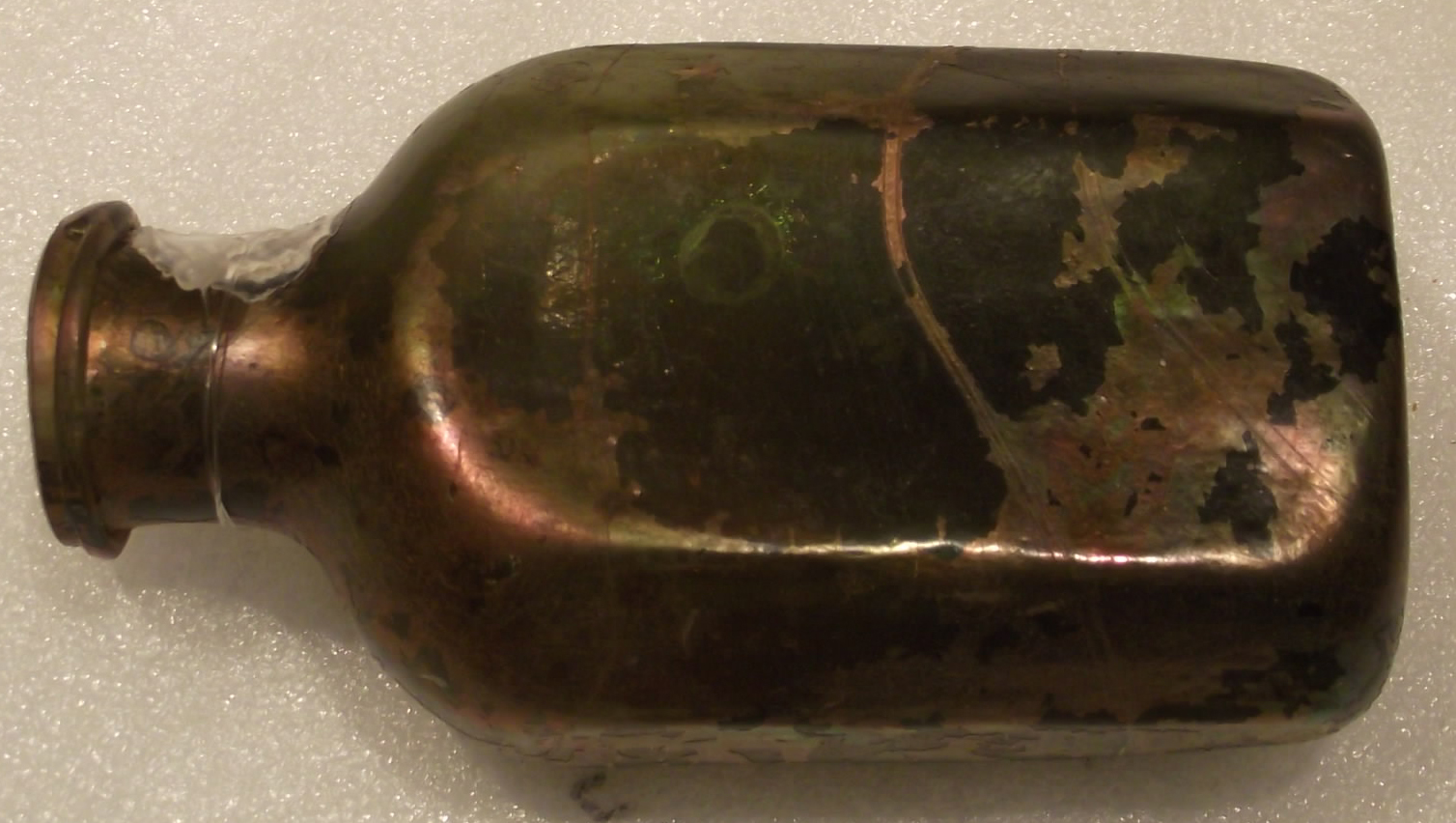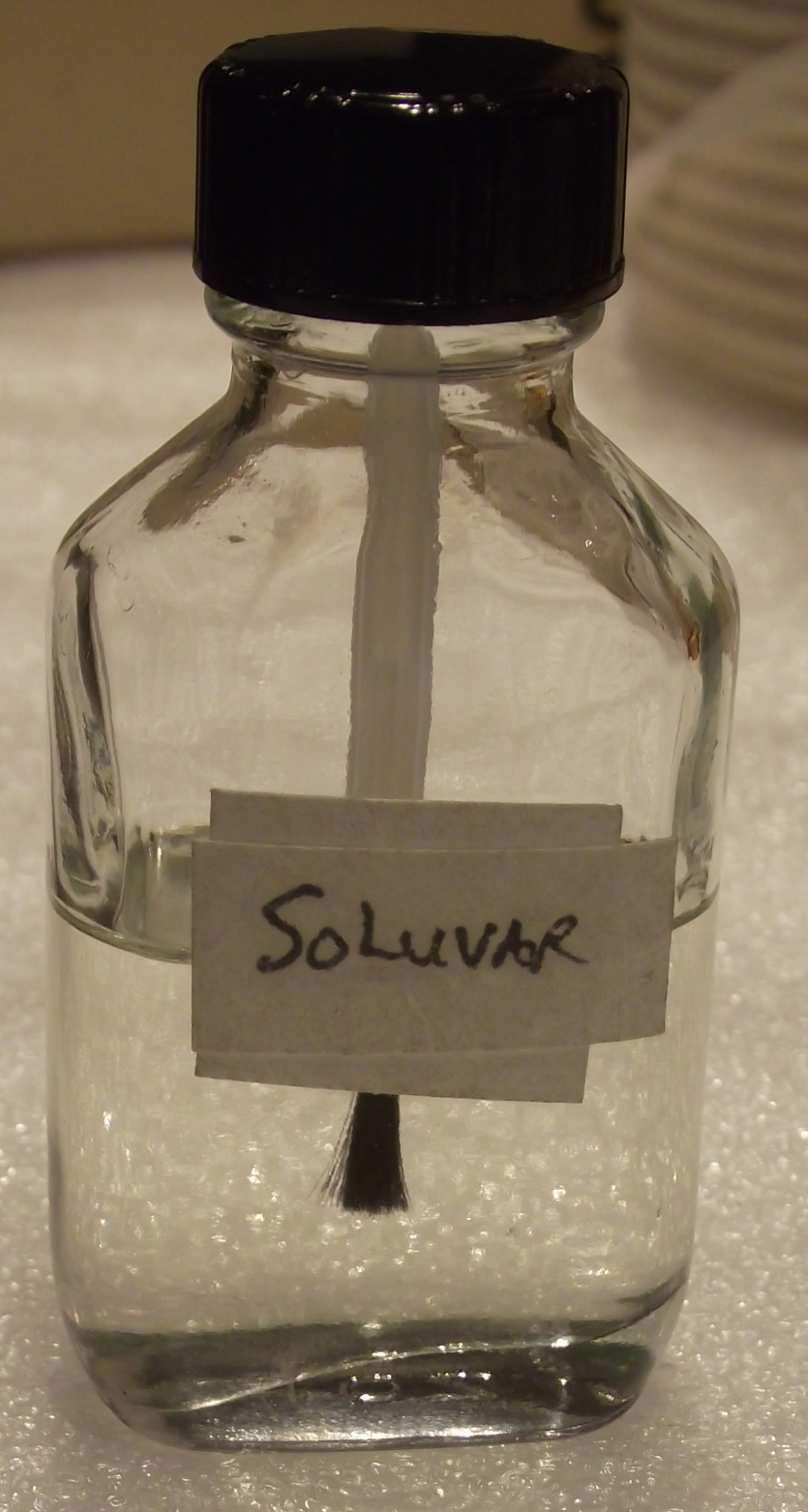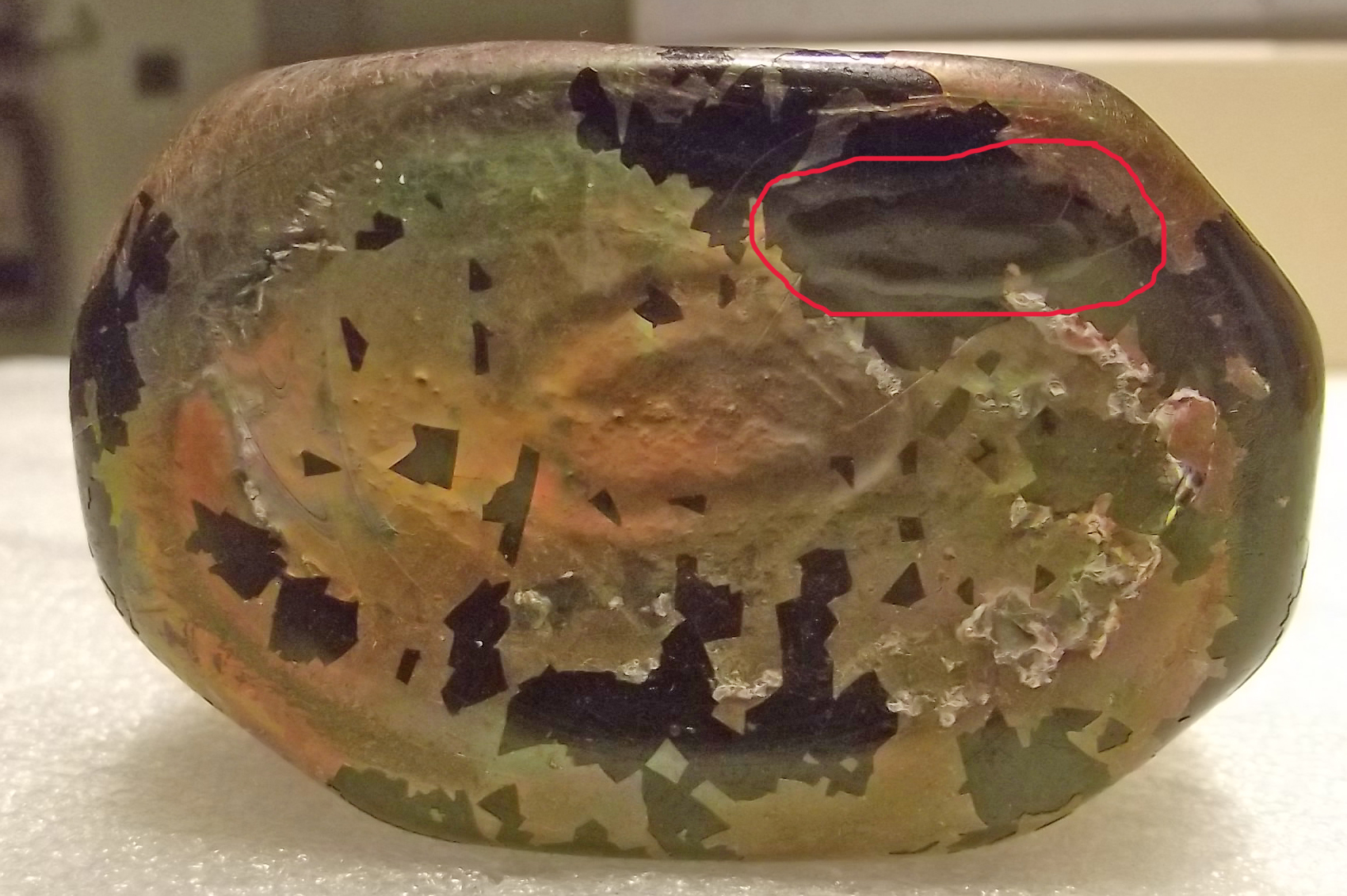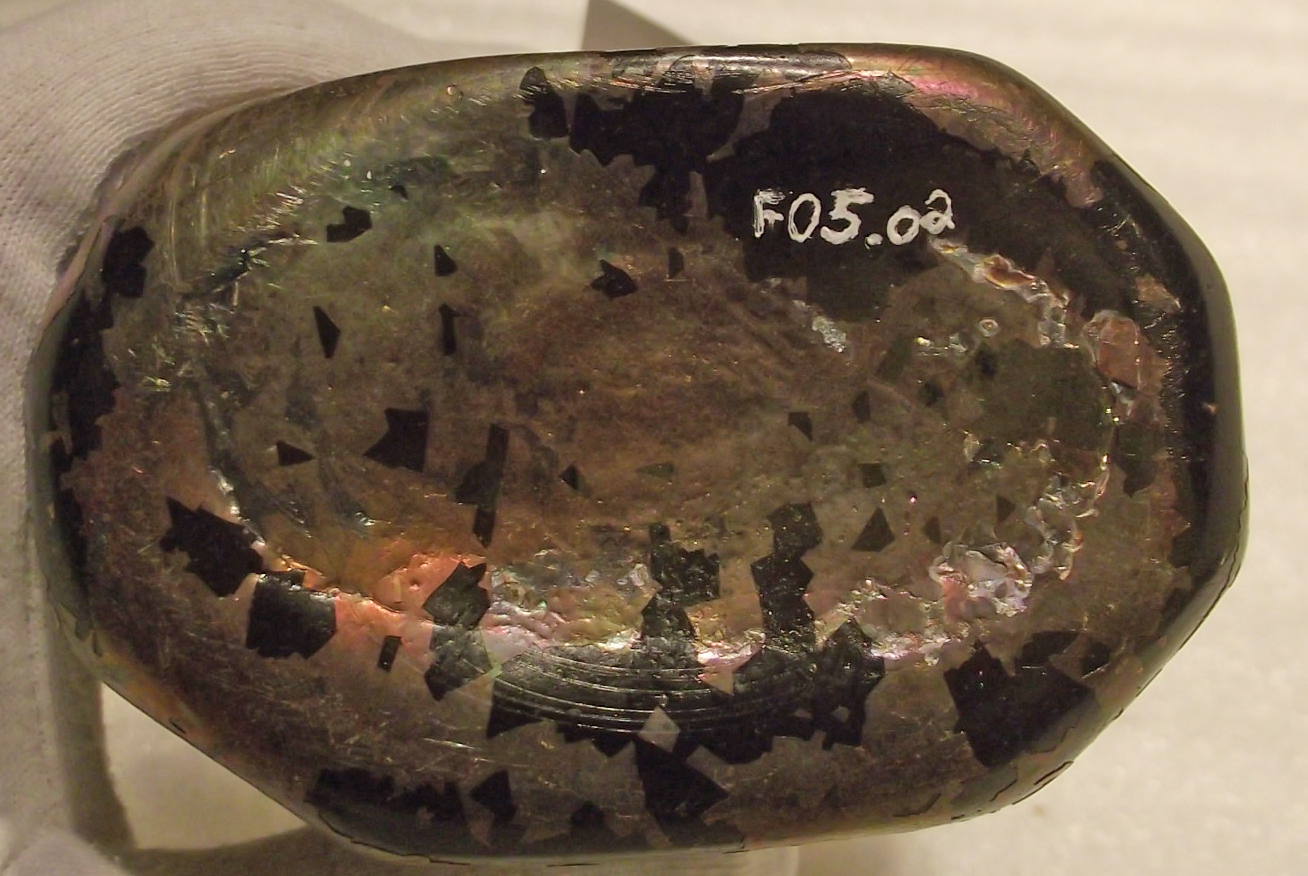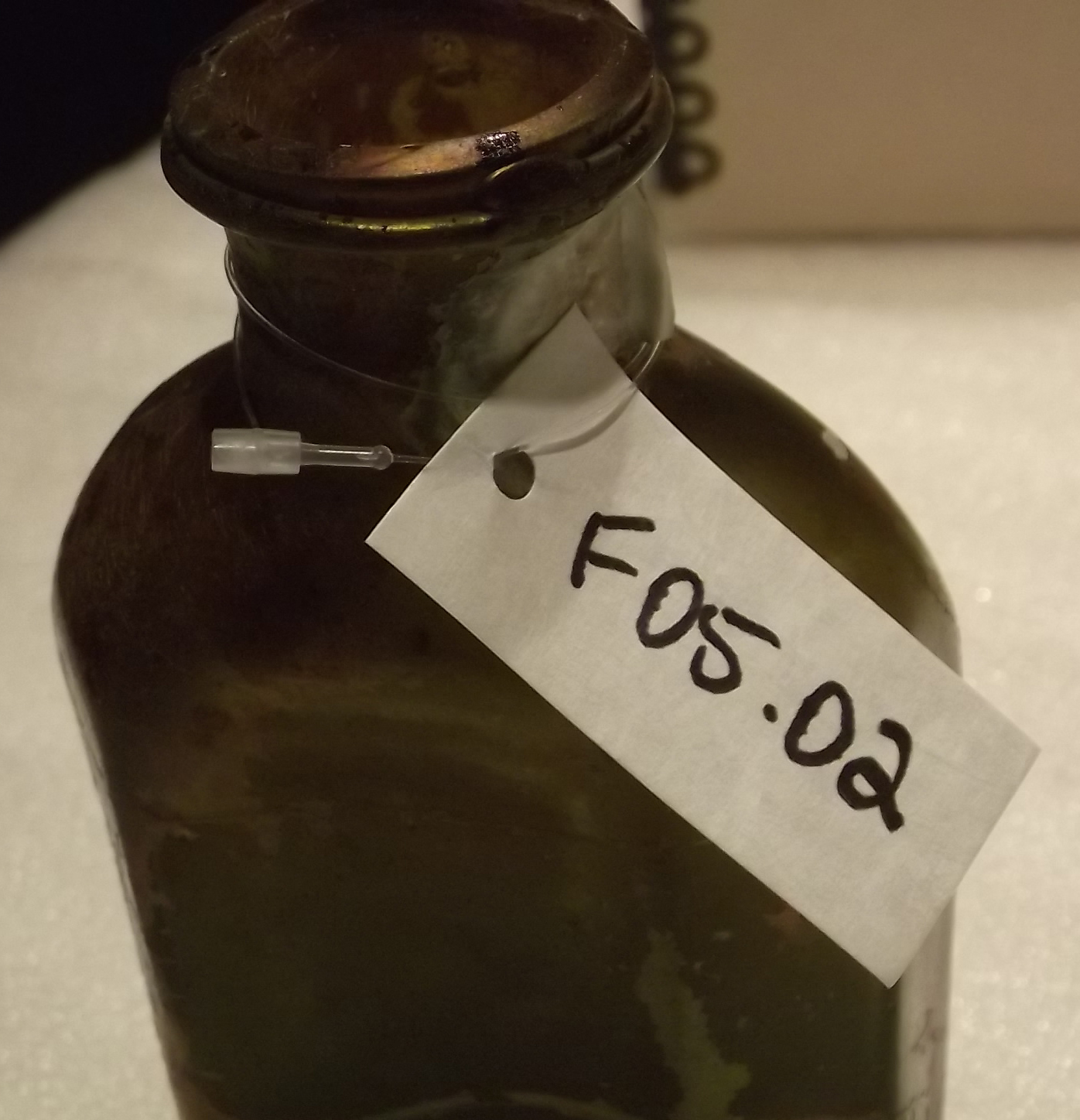One of the major tasks associated with having such a large collection of objects (about 32,000!) is keeping track of everything’s location. Every object in our collection has a number so that we can track it, both digitally in our database and on our paper location cards. What I want to talk about in this post is how we number an object because of how important this little task is.
The bottle (ca 1781) pictured above was recovered with numerous others in 1934 from the York River. We have 71 of these bottles or bottle fragments in our collection. When we pulled it out of the Chesapeake Bay Gallery last week, we discovered it was numbered incorrectly but, thankfully, renumbering the piece is an easy process.
The first thing to do is find a spot for the number to go. We usually like to choose a spot that visitors won’t be able to see if we put the item on display because we don’t want them to be distracted when looking at the object. We also choose a spot that is stable and won’t be a problem. For example, the bottle is flaking and I would have to be very careful not to place the soluvar over one of the flaking areas. For this bottle, the bottom will do nicely. The first thing to do is put a thin layer of soluvar on the piece. Soluvar is a type of acrylic that is easily removable and keeps us from having to write directly on the object, thereby protecting it. You can read more about soluvar HERE.
Soluvar can take awhile to dry so we usually give it 2-4 hours to make sure that it has hardened, otherwise the next step won’t work at all. We then write the number over the soluvar, careful not to get any on the bottle.
There are a variety of tools we use to mark the bottles. The best choice is an archival pen, but others will work. We use Gelly Roll pens (as in this case), because they tend to write nicely on the soluvar, various archival pens and, my favorite, Slick Writers, which write wonderfully on a slick surface and dry instantly. We then put another layer of soluvar over the number to protect it from being worn off. After this whole process is done, we attach a tag so that we will be able to easily spot the object’s number without having to pick it up, which comes in handy when doing inventories of the storage areas.
This may not be the most glamorous part of our job, but it is one of the most important and useful things we do. More than once I have run across an object that either has no number on it or the number has been so poorly written that it is illegible. Thankfully we have our object folders with pictures and sometimes descriptions to help out in those cases.
